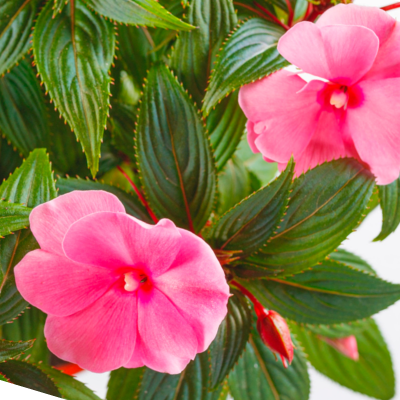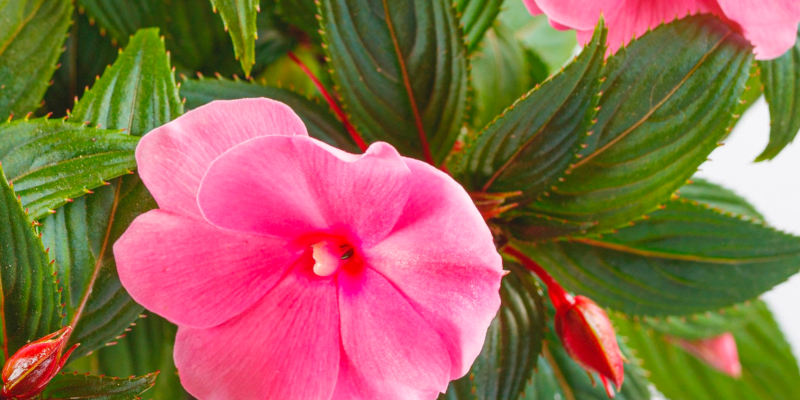How Long Do Impatiens Last: A Comprehensive Guide

Key Takeaways
- Impatiens can last anywhere from a few months to a year depending on the type of impatiens, growing conditions, and care.
- Factors affecting impatiens longevity include sunlight, soil quality, watering frequency, and pest control.
- To maximize the lifespan of impatiens, provide partial shade, well-drained soil, proper watering, and pest control.
Impatiens are a popular bedding plant known for their vibrant colors and ability to thrive in shady areas. They are easy to care for and can brighten up any garden or outdoor space. However, if you're considering planting impatiens, you may be wondering how long they last and what factors can affect their longevity.
The lifespan of impatiens can vary depending on several factors, including the type of impatiens, growing conditions, and care. In general, impatiens can last anywhere from a few months to a year, depending on these factors. Some types of impatiens, such as New Guinea impatiens, can have a longer lifespan than others.
Factors affecting impatiens longevity include the amount of sunlight they receive, the quality of soil, watering frequency, and pest control.
For example, impatiens prefer partial shade and moist, well-drained soil. Overwatering or underwatering can lead to root rot or other problems that can shorten their lifespan. Pests such as aphids, spider mites, or whiteflies can also damage impatiens and reduce their longevity.
Impatiens Lifespan
Impatiens are a popular choice for gardeners due to their bright and colorful blooms. However, it is important to note that impatiens are an annual plant, meaning they complete their life cycle in one growing season.
Annual vs Perennial Varieties
There are some perennial varieties of impatiens, such as Impatiens sodenii and Impatiens niamniamensis, but these are less commonly grown than the annual varieties. The annual impatiens are typically grown as bedding plants, in hanging baskets, or in containers, and are discarded at the end of the growing season.
Average Lifespan in Optimal Conditions
In optimal growing conditions, impatiens can bloom continuously from spring until the first frost. However, the lifespan of impatiens can vary depending on a number of factors, such as the amount of sunlight, water, and fertilizer they receive, as well as the temperature and humidity levels.
Impatiens grown in shady areas may have a longer lifespan than those grown in full sun, as they are less susceptible to heat stress and water loss. Additionally, impatiens that are regularly fertilized and watered will have a longer lifespan than those that are not.
Overall, the average lifespan of impatiens in optimal conditions ranges from 3 to 6 months. It is important to note that impatiens are susceptible to a number of diseases, such as downy mildew, which can shorten their lifespan. Regular monitoring and proper care can help to prolong the life of impatiens and keep them blooming throughout the growing season.

Factors Affecting Impatiens Longevity
When it comes to impatiens, their lifespan can vary depending on several factors. In this section, we will discuss some of the most significant factors that affect impatiens longevity.
Sunlight and Shade Requirements
Impatiens are known for their ability to thrive in shady areas. However, they still require some sunlight to grow and bloom. Too much direct sunlight can cause impatiens to wilt and die, while too little sunlight can result in stunted growth and poor blooming.
Ideally, impatiens should be planted in a location that receives no more than one to two hours of direct sunlight each day, and this sunlight should be in the morning or late afternoon.
Watering and Soil Needs
Impatiens require consistent moisture to thrive. They should be watered regularly, but not overwatered, as this can lead to root rot. The soil should be well-draining, as impatiens do not tolerate standing water. A layer of mulch can help retain moisture and keep the soil cool.
Temperature and Climate Influence
Impatiens are sensitive to temperature and climate changes. They thrive in mild temperatures, between 60 and 75 degrees Fahrenheit. Impatiens can be grown as annuals in most climates, but they are susceptible to frost damage, so they should be planted after the last frost in the spring. In hot, dry climates, impatiens may require more frequent watering and shade.
Common Pests and Diseases
Impatiens are prone to several pests and diseases, which can affect their lifespan. Common pests include aphids, spider mites, and whiteflies, while common diseases include powdery mildew and downy mildew. Proper watering, fertilization, and soil drainage can help prevent these issues. If pests or diseases do occur, they should be treated promptly to prevent further damage.
Overall, impatiens can last for several months with proper care and maintenance. By providing the right amount of sunlight, water, and nutrients, and protecting them from pests and diseases, you can enjoy the beauty of impatiens for a long time.

Carl Anderson
Carl Anderson is an avid outdoorsman with a keen interest in writing about and reviewing tools. He has over 20 years of writing experience and the only time he isn't feverishly typing away at his computer is when he's outside in nature working on his projects. You can learn more about him here.
Join our community!
Join to receive guides, insights, and the latest gardening deals!
